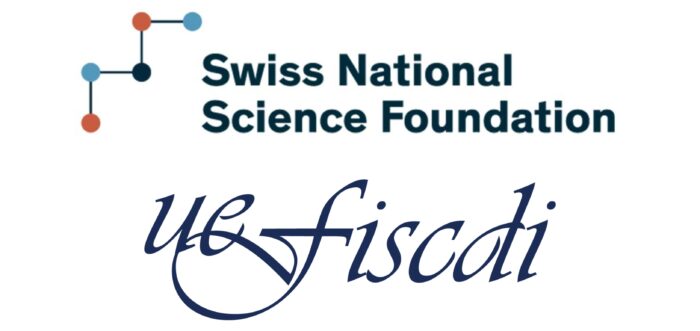Becoming Axolotl: Empathy, Simulation, and Embodiment in Medieval Narratives
Research ProgramsBecoming Axolotl: Empathy, Simulation, and Embodiment in Medieval Narratives
Becoming Axolotl: Empathy, Simulation, and Embodiment in Medieval Narratives
Cognitive Literary Studies and Narratology

This research is carried out and financed within the framework of the second Swiss Contribution MAPS (project code: F-RO-CH-2024-0193).
MAPS (Multilateral Academic Projects) is a funding instrument with Bulgaria, Croatia, Hungary, Poland, and Romania, implemented under the second Swiss Contribution, mandated by the Swiss Agency for Development and Cooperation.
Becoming Axolotl is funded by the SNSF (Swiss National Science Foundation), UEFISCDI (The Executive Unit for Financing Higher Education, Research, Development and Innovation of the Romanian Ministry of Research) and HRZZ (The Croatian Academy of Sciences and Arts) – [Grant Number IZ11Z0_230118].
Timeframe:
2025 – 2029
Project Leader:
Cătălin ȚĂRANU, PhD, NEC Scientific Researcher
Project Researchers:
Oana COJOCARU, PhD (NEC Alumna)
Alexandra ILINA, PhD (NEC Alumna), Lecturer, Faculty of Foreign Languages and Literatures, University of Bucharest
Partner Team (Switzerland):
PI: Annette KERN-STÄHLER, PhD, Professor, Department of English, University of Bern
Hannah PIERCY, PhD, University of Bern
Abbie FRAY, PhD Researcher, University of Bern
Partner Team (Croatia):
PI: Mirko SARDELIĆ, PhD, Croatian Academy of Sciences and Arts, Zagreb, Croatia
External Partners/Collaborators:
Stephanie TRIGG, Professor, Medieval English Literature, University of Melbourne
Suleiman MOURAD, Professor, Religion and Middle East Studies, Smith College
Dominik PERLER, Professor, Medieval Philosophy, Humboldt University, Berlin
Tommaso ALPINA, Professor, Medieval Philosophy, esp. Islamic Philosophy, University of Pavia
Pia CAMPEGGIANI, Professor, Philosophy of Emotion and Moral Philosophy, University of Bologna
Francesca FIASCHETTI, PhD, History, University of Vienna; Director of the Mongolia Cluster, Austrian Academy of Sciences
Keith HOLYOAK, Professor, Cognitive Psychology, University of California, Los Angeles
Giovanni TARANTINO, Professor, History of Emotions, University of Florence
In Julio Cortázar’s short story ‘Axolotl’ (1956), the protagonist becomes so fascinated watching the alien yet human-like animals in a terrarium, trying to understand the world through their eyes and experience it through their senses, that one day he becomes one of them. Long before this postmodern metamorphosis, medieval people engaged with a variety of radically other selves, from non-human actors (plants, animals, material objects) to racialized humans (in medieval literature and art sometimes understood as not-quite-human) and super-/para-human agents (spirits, gods, monsters), trying to inhabit their perspective, experience the world through their senses, and feel the emotions they might feel.
This project is a comparative investigation of medieval European literary texts that invited their audiences to simulate the cognitive, emotional, and sensorial experiences of ‘strange’ selves. Many medieval texts focus empathy in unexpected directions, asking their audiences to simulate the cognitive, emotional, and sensorial experiences of radical others. Taking Thomas Nagel’s question ‘What Is It Like to Be a Bat?’ (Nagel 1974) further to ‘How and What Does a Bat Feel?’ (and what about a boat or a ‘barbarian’?), this project explores how medieval European texts imagine and recreate the experiences of othered agents. Building on recent work in cognitive literary studies, sensory studies, narratology, and critical theory (especially environmental humanities, object-oriented ontology, and critical race theory), this project aims to create a new methodological framework at the underexplored intersection of these fields of inquiry. In doing so, it will cast spotlights on a variety of cultural spaces and points of encounter with radical others across and beyond medieval Europe, from the eighth to the fifteenth century, from Iceland to Anatolia (but extending westward to North America and eastward to Central Asia). Its sources include Old English riddles, Middle English romances, Old Norse sagas, Byzantine hagiographies, and a hitherto unattempted double perspective of Eurasian contacts (Arabic and Mongolian accounts of Europeans and vice versa).
We aim to answer such questions as: How do texts convey their makers’ engagements with the thoughts, feelings, and sensations of agents that might appear just as alien yet enticingly all-too-human to them as Cortázar’s axolotls? What makes certain medieval texts particularly good at inviting and modelling their audiences’ cognitive-emotional-sensorial simulation of such radical others? What do these texts tell us about the variety of medieval vernacular and elite theories of selfhood, personhood, affect, sensation, ontology, materiality, race? The project will result in a ground-breaking account of the cognitive-cultural frameworks that medieval people used to engage with and imaginatively simulate the thoughts, feelings, and sensations of a variety of others including swords, trees, bears, spirits, Mongolian khans, and European ‘crusaders’.